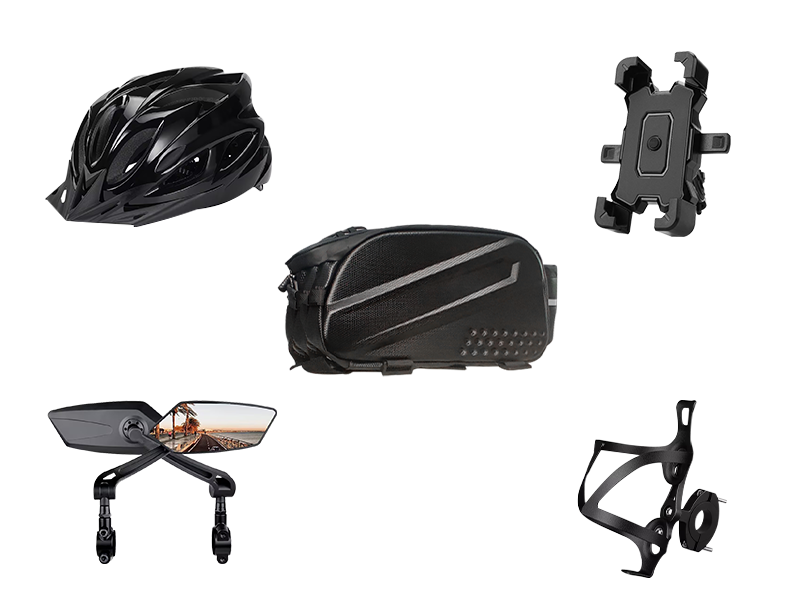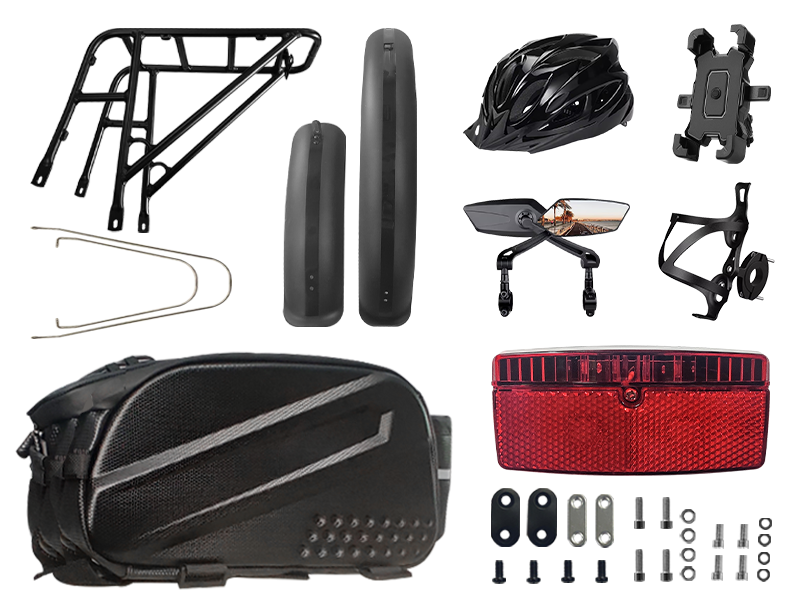Torque vs. Speed: What You Need to Know About Your eBike's Performance
DEC 27, 2024
What is Torque?
Torque, in simple terms, is the rotational force that propels the wheels of the eBike. It’s responsible for getting the bike moving and helping it climb hills or tackle rough terrains. The more torque your eBike motor produces, the better it can overcome resistance, such as wind, inclines, or rough surfaces. Torque is measured in Newton-meters (Nm) and is an important indicator of how well your eBike can accelerate and perform in various conditions.
In an eBike, torque is primarily provided by the motor, though pedaling also contributes to generating force. Typically, motors with higher torque values are more suited for off-road or steep hill-climbing applications.
What is Speed?
Speed is the rate at which your eBike moves along the ground, typically measured in kilometers per hour (km/h) or miles per hour (mph). The speed of an eBike is influenced by a combination of factors, including the motor's power output, the rider’s pedaling, and the terrain. Speed is often what riders are most concerned about when it comes to performance, as it directly impacts how fast you can travel.
However, speed alone doesn't tell the full story of how an eBike performs—it's the combination of speed and torque that really defines the riding experience.
How Torque and Speed Work Together
While torque and speed are two distinct factors, they are intricately linked. Here’s how they influence each other:
-
Torque Affects Acceleration: When you first start riding your eBike, torque is the primary force that helps the bike accelerate. A motor with high torque provides quick, responsive acceleration, allowing the bike to get up to speed faster. Without enough torque, the bike may struggle to move off the starting line or may feel sluggish, especially on inclines or rough surfaces.
-
Speed Rises as Torque Decreases: As you increase your eBike’s speed, the role of torque diminishes. This is because the motor’s job is to overcome resistance at lower speeds, while at higher speeds, the motor is working to maintain momentum. Once the bike reaches a certain speed, the motor doesn’t need to generate as much torque, and speed becomes more dependent on the power output of the motor.
-
Balance Between Torque and Speed: Ideally, an eBike should offer a balance between torque and speed. Too much torque without enough speed can result in high acceleration but limited top-end performance, while too much speed with low torque may make the bike feel weak or underpowered, particularly on steep inclines or in challenging conditions.
-
Motor Type and Power Output: The type of motor and its power output play a significant role in balancing torque and speed. For instance:
- Hub Motors: Typically, these motors provide less torque but are more suited for maintaining steady speeds, particularly on flat terrain.
- Mid-Drive Motors: These motors, positioned at the bike’s bottom bracket, generally offer higher torque, making them ideal for tackling hills and rough terrains while also providing a good balance between speed and acceleration.
-
Rider’s Pedal Input: The rider's pedaling input can also affect the relationship between torque and speed. Pedaling harder can increase the torque available to the motor, thus helping to accelerate or climb hills more easily. Conversely, when cruising at higher speeds, less pedal force is required to maintain momentum, allowing the motor to focus on speed rather than torque.
Real-World Example
Imagine you’re riding up a steep hill on your eBike. In this case, the motor needs a lot of torque to overcome gravity and move the bike forward. However, as you reach the top of the hill and start cruising on a flat road, you don’t need as much torque anymore. Instead, the motor’s focus will shift toward maintaining speed while you continue to pedal or coast.
On the other hand, if you’re riding at high speeds on a flat road, torque becomes less of a concern, and your motor will work more efficiently to maintain speed without putting as much strain on the system.
Conclusion
In summary, torque and speed are closely related but serve different purposes on an eBike. Torque is essential for acceleration, hill climbing, and overcoming resistance, while speed represents how fast the bike travels. The key to an enjoyable and efficient eBike experience lies in finding a motor that provides the right balance between these two factors, depending on your riding style and the terrain you frequent. Whether you need more torque for off-roading or more speed for commuting, understanding the relationship between these elements will help you make an informed decision when choosing your next eBike.
If you’re in the market for an eBike, consider both torque and speed to ensure the bike matches your specific needs. With the right combination, you’ll enjoy smoother, faster, and more enjoyable rides every time you hit the road.












